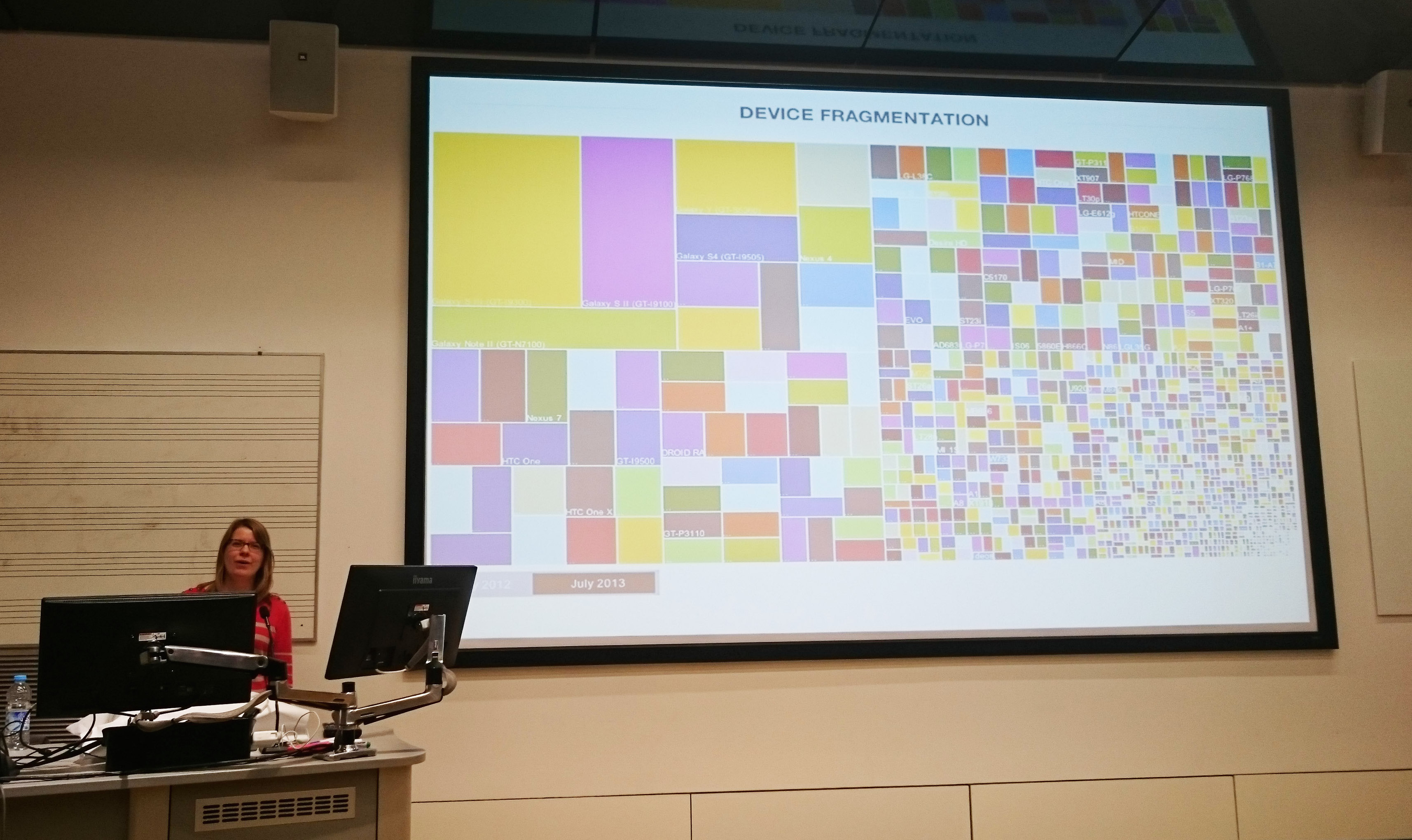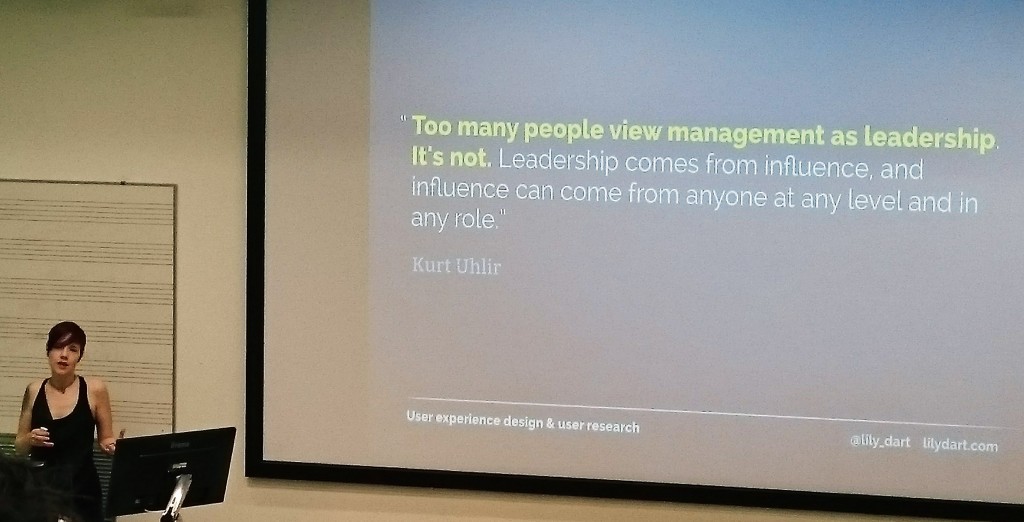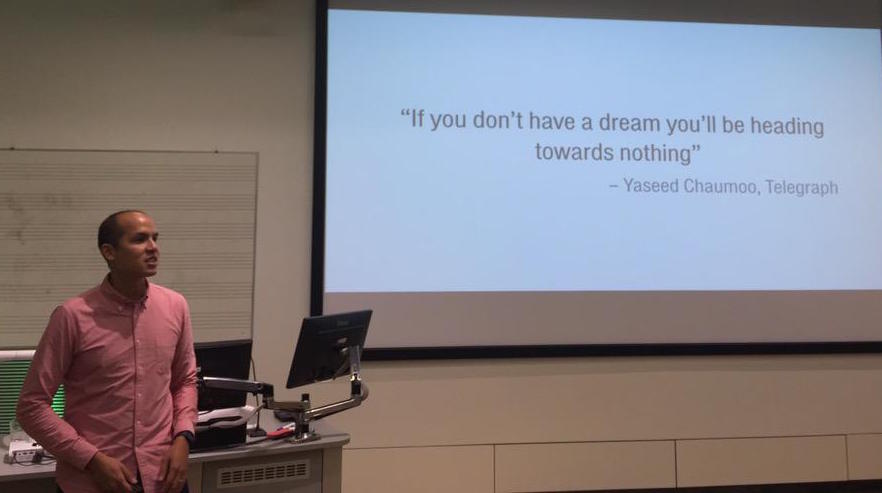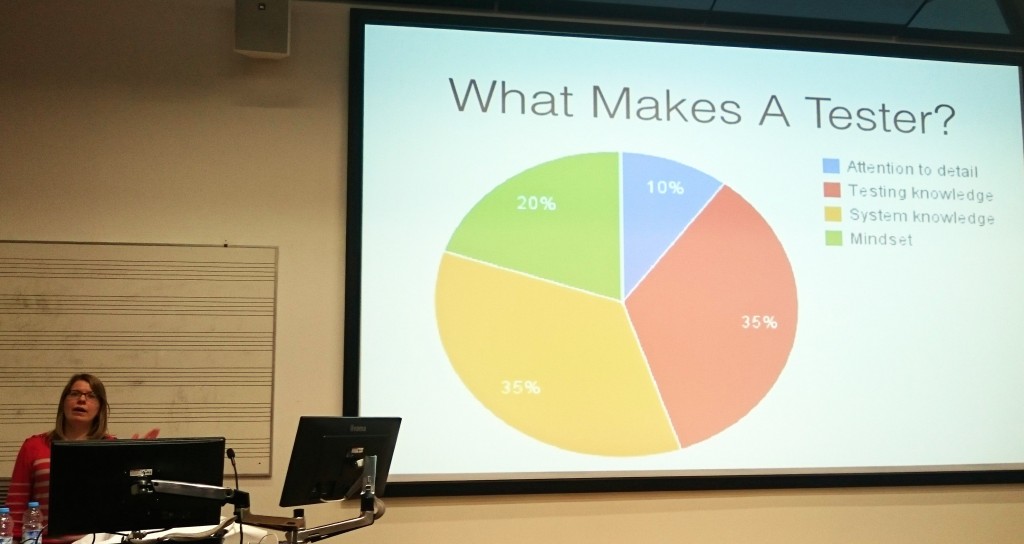Design and development lessons from UpFront Mini

By Jordan Yates and Alex Ashman
Two of Tecmark’s digital designers visited Manchester’s UpFront Mini conference last week.
Eight speakers filled the day with presentations ranging from technical to general covering topics as diverse as development, project management and design.
We asked them to select their highlights…
Lily Dart (@lily_dart) – Applying Leadership Thinking to UX

Jordan’s verdict: I thoroughly enjoyed Lily’s talk. She spoke about having a shared direction and focus, and setting a group goal to hit when working on a project. It’s imperative all members of the team know why the goals are important and how to achieve them. She also talked about communicating those goals to your team so you can go beyond what’s required and surpass them.
Alex’s verdict: Lily spoke about the qualities that make a good designer and team member, focussing on listening, collaborating, having focus and taking responsibility.
My favourite quote was: The qualities of a good designer are the qualities of a good leader.
For example both leader and designers:
- Help colleagues to solve problems.
- Focus advice to benefit the value and impact of the project.
- Mentor others to understand the creative process.
- Set direction and focus.
- Communicate team and project goals.
Lily made an excellent point that to be a good designer you have to be empathetic, not only to your clients and the end user, but towards your team too. You have to ask yourself “what do they need and what does the project need?” – not “what do I need?”
Michael Le (@lifeofmle) – Exploring Design with Agile

Jordan’s verdict: Design’s an iterative process, part of the product strategy and delivers learning: these are a few lessons that Telegraph UX designer Micheal Le shared. The one that really struck a chord is about design delivering learning – this sums up a lot of what design is. It isn’t just about looking great, it’s about taking a purpose and making it visually digestible.
Alex’s verdict: Micheal spoke about the benefits of “implementing agile project management in design and development teams”.
He made a lot of excellent points around the value of working in sprints and iterations, and gave great examples of how this process can be more rewarding, generate more concepts, is far more collaborative and makes the client feel more involved in the process.
He broke down his project management style into these invaluable steps, which are a great way of developing a piece:
Step 1) Sketches.
Step 2) Wireframing for functionality, then ask the development team for their opinions.
Step 3) Prototypes, mood boards, very rough designs, even animated gifs to convey the feel of the piece.
Step 4) Begin designing, but create many versions and be flexible to changes.
Step 5) Take a moment to asses the user’s needs and make sure these are still being considered foremost.
Step 6) Involve the development teams to see what they need and how your designs can be altered to fit them best.
Step 7) Begin final designs.
I love the idea of involving the development teams early in the process as this
minimises amends further down the line and make the designs more fit for use.
Amy Phillips (@ItJustBroke) – Mobile Testing with Confidence

Jordan’s verdict: This was a funny yet insightful look into the world of testing. Amy talked about “getting creative with testing” and thinking outside the box.
One example had Amy testing her company’s app on public transport to see if it would work. This made me think about web testing: for example, if a website works well on wifi, that doesn’t guarantee that it’ll work well on 4G or 3G. It’s important to test in a huge variety of ways.
Benjamin Holloway (@benjaminhollway) – Young People and Technology
Alex’s verdict: Benjamin spoke with a confidence that was very surprising considering his age (17). His talk was insightful and I’m sure his future will be very bright.
He spoke of how children should be encouraged more at an early age to learn about technology, coding and creative thinking. He mentioned that schools could implement more software like Scratch to teach code to children through game creation.
More technology classes at school could get children interested, or even free or discounted tickets at technology conferences. Finally, he mentioned that agencies who offer internships should make sure they’re as rewarding as possible – ensuring that young adults get real-world experience and the agency gets good work from their intern.

Get 123 pages of expert advice straight to your inbox.
-
Apps (46)
Content Marketing (67)
Digital PR (1)
Integrated Marketing (3)
Multi Screen (12)
News (99)
PPC (2)
Search (120)
Tecmark (70)
Uncategorized (2)

About the Author


